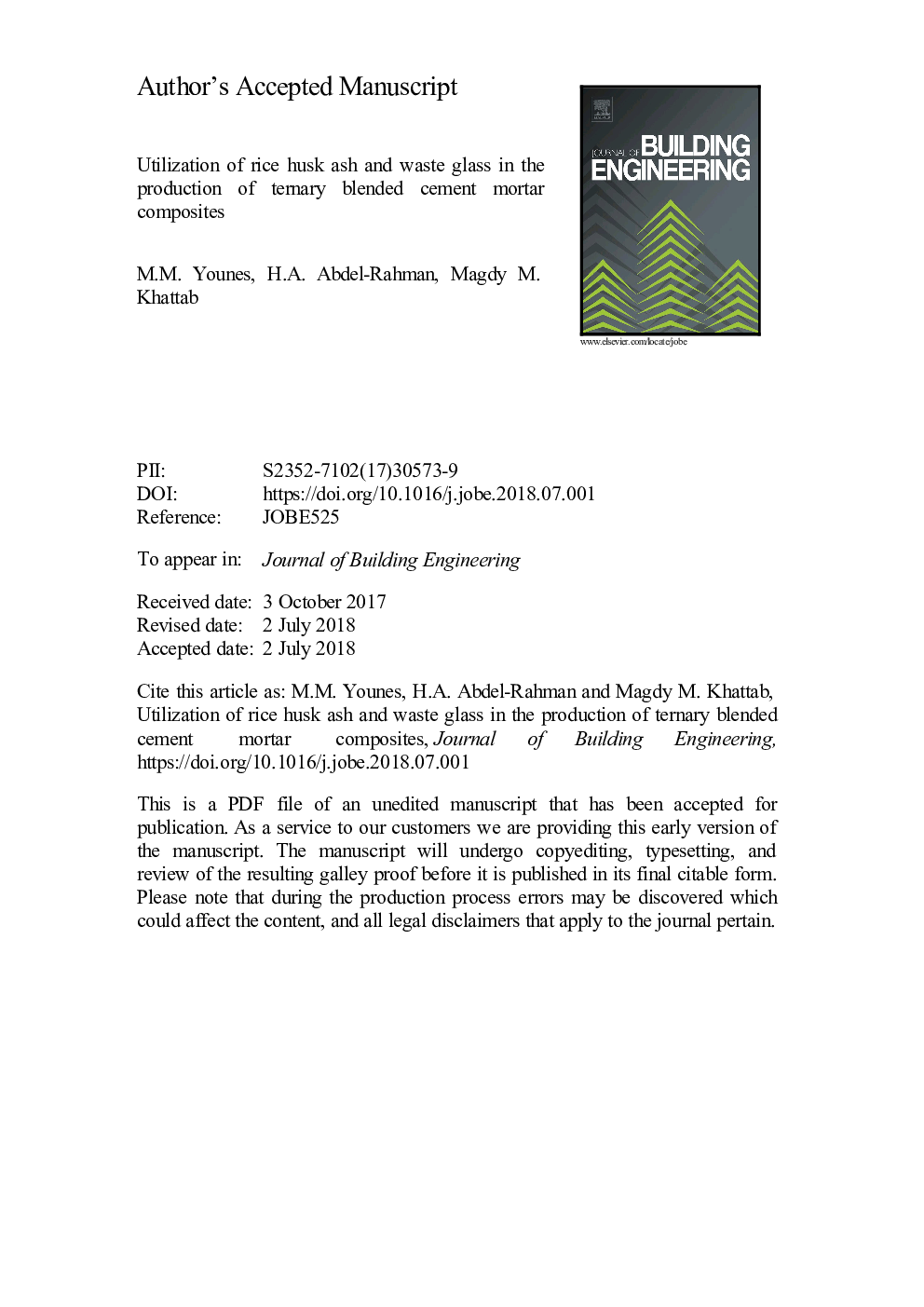| Article ID | Journal | Published Year | Pages | File Type |
|---|---|---|---|---|
| 6749654 | Journal of Building Engineering | 2018 | 27 Pages |
Abstract
The purpose of this study is the recycling or reuse of waste materials in the production of ternary blended cement mortars (TBCMs) by a partial substitution of ordinary Portland cement (OPC) with a ratio of 20% waste glass powder (WG) to obtain a blended cement (80% OPC: 20% WG). Three different ratios of rice husk ash namely 2.5%, 5%, and 10% are added to obtain three TBCMs as well as conventional cement mortar CM (zero % of rice husk ash). The specimens of all mortars are cured under tap water for different periods of time namely 3, 7, 28, 60, and 90 days. The influence of amorphous silica present in both waste glass and rice husk ash on the performance of TBCMs is studied. The results emphasized that both the waste glass and rice husk ash has a positive effect in the improvement of the compressive strength values of all mortar specimens with increasing hydration time. While the physical parameters such as total porosity and water absorption percentages decreased. The results also indicated that for any given hydration time, the compressive strength values of TBCMs are higher than those of CM. The noticeable improvement in the compressive strength is for TBCM2 specimens (5% rice husk ash). On the other hand, the influence of gamma-irradiation doses on physico-mechanical properties of unsaturated polyester (UP)/impregnated blended cement mortar composite specimens (TBCMs) is studied. The obtained data showed an enhancement in the mechanical properties of the irradiated specimens as compared to unirradiated ones. Furthermore, the thermal stability of TBCMs is studied by using thermo gravimetric analysis (TGA). The results are also confirmed by XRD analysis.
Related Topics
Physical Sciences and Engineering
Engineering
Civil and Structural Engineering
Authors
M.M. Younes, H.A. Abdel-Rahman, Magdy M. Khattab,
